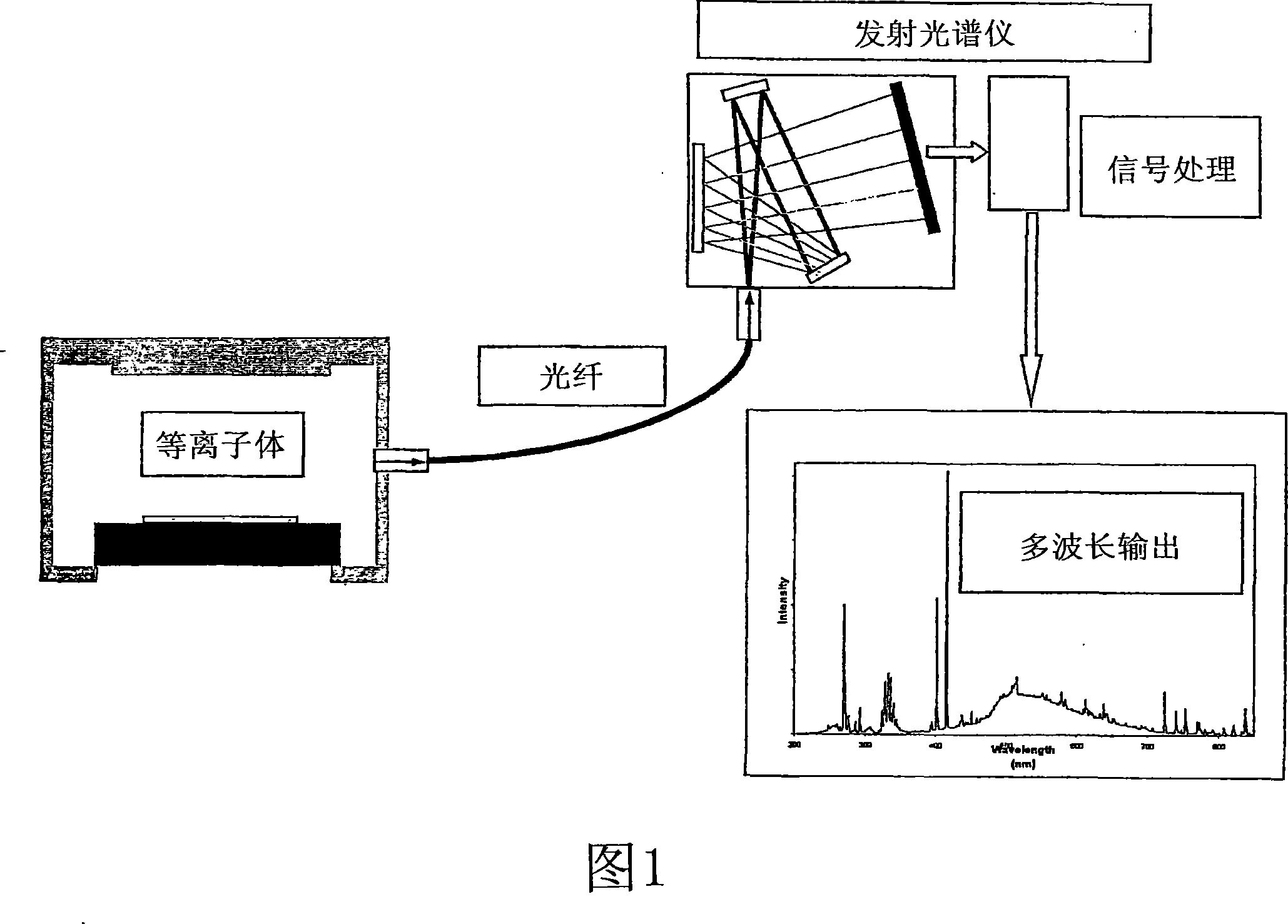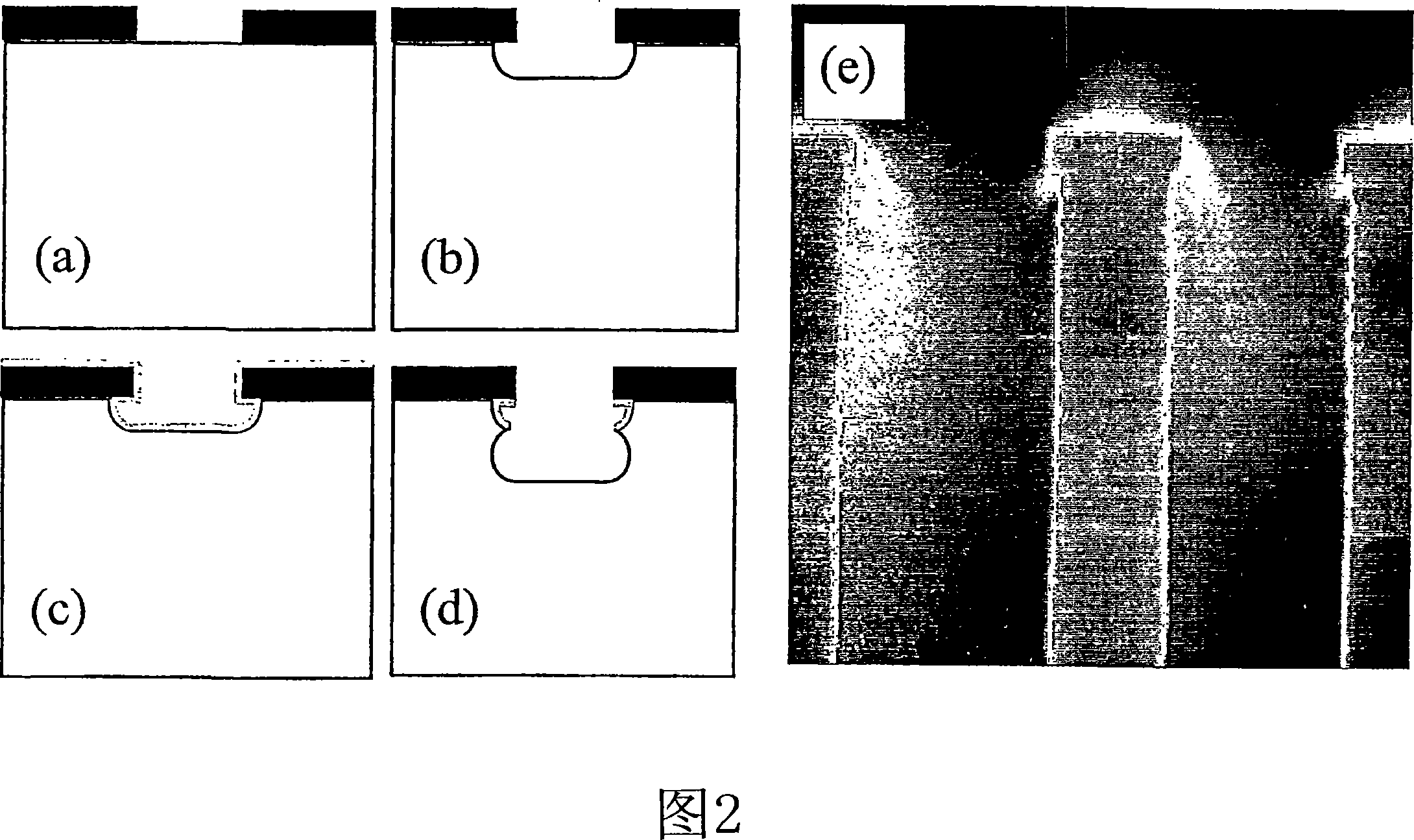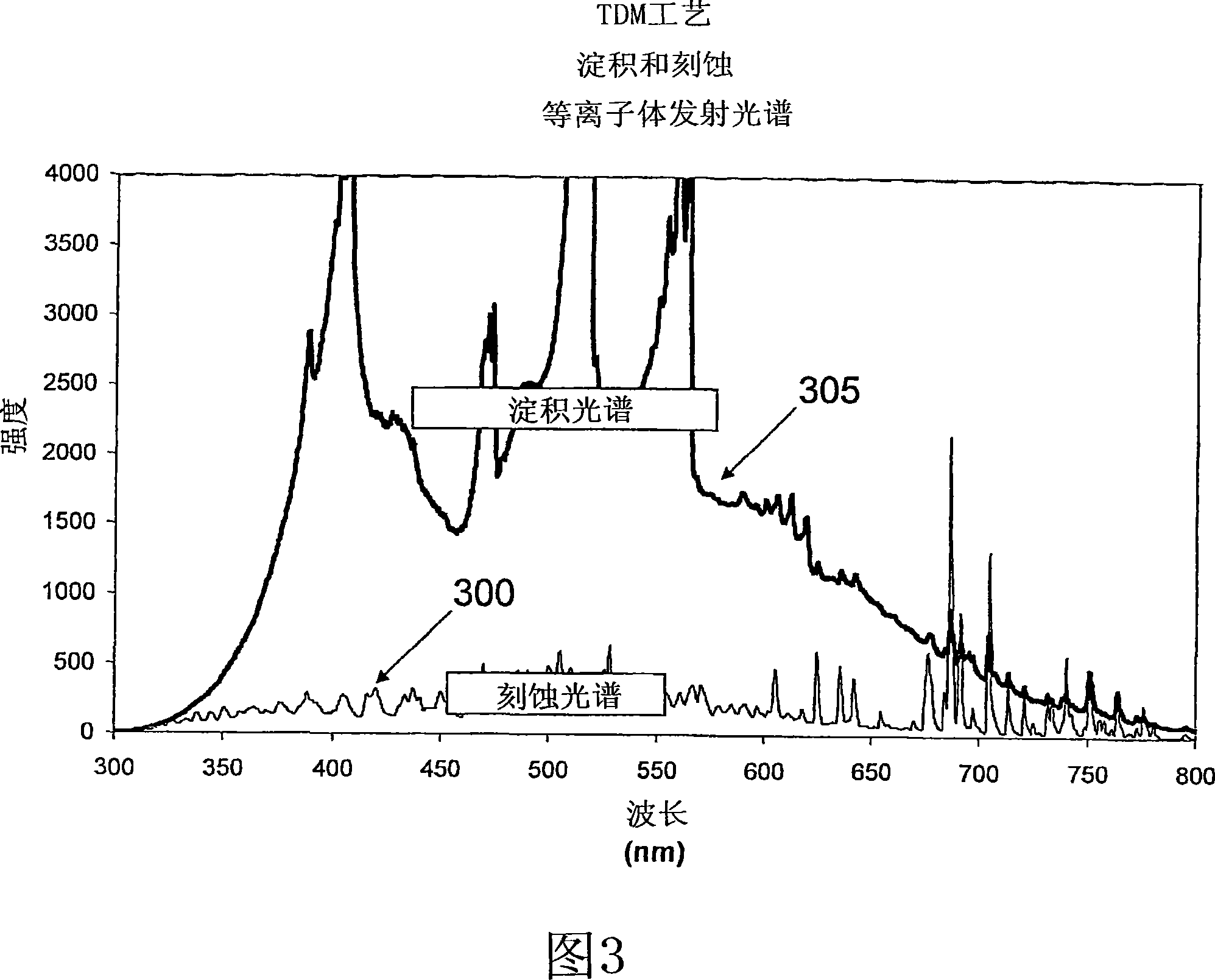Selection of wavelenghts for end point in a time division multiplexed process
A time-division multiplexing and process technology, applied in metal material coating process, process for producing decorative surface effects, decorative arts, etc., can solve the problem of not providing advantages and so on
- Summary
- Abstract
- Description
- Claims
- Application Information
AI Technical Summary
Problems solved by technology
Method used
Image
Examples
Embodiment Construction
[0053] We disclose an apparatus for detecting transitions between different materials in a time division multiplexing (TDM) process by analyzing the intensity of at least one wavelength region emitted by a plasma without using synchronized triggering events.
[0054] These wavelength regions are chosen to reduce the wide variations in signal intensity that occur during a series of alternating etch and deposition steps. Over a small wavelength range, there is no main emission line and the plasma background emission is almost constant. Thus, the ratio of two adjacent wavelength regions (at 440 nm and 443 nm in this example) has a value close to 1 when no etching occurs. This is true both in the deposition and etching steps, provided the wavelength is carefully chosen. Therefore, as the process alternates between deposition and etch steps, the value of this ratio changes only slightly and remains close to a value equal to one. By displaying the ratio of the two wavelength regio...
PUM
 Login to View More
Login to View More Abstract
Description
Claims
Application Information
 Login to View More
Login to View More - R&D
- Intellectual Property
- Life Sciences
- Materials
- Tech Scout
- Unparalleled Data Quality
- Higher Quality Content
- 60% Fewer Hallucinations
Browse by: Latest US Patents, China's latest patents, Technical Efficacy Thesaurus, Application Domain, Technology Topic, Popular Technical Reports.
© 2025 PatSnap. All rights reserved.Legal|Privacy policy|Modern Slavery Act Transparency Statement|Sitemap|About US| Contact US: help@patsnap.com



